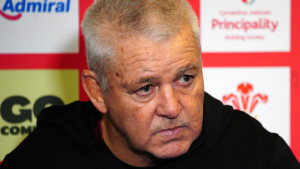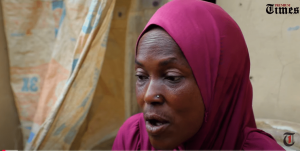World Cup goes to area devastated by earthquake, tsunami


KAMAISHI, Japan (AP) — Nodoka Kikuchi’s job as a tour guide at the Tsunami Memorial Hall is to detail the earthquake and deadly tsunami that hit this part of Japan’s northeast coast almost nine years ago.
A student then at East Kamaishi Junior High School, she and her classmates fled from the school into the surrounding green hills to escape the surging sea. They ran for their lives along with teachers and students at the adjacent Unosumai Elementary School.
All of the students at the school that day survived, but the tragedy killed just over 1,000 in Kamaishi, a small fishing town. All told, more than 22,000 people died, or are presumed dead, in the quake and tsunami that devastated the entire northeastern region on March 11, 2011.
“If nobody died, it would be easy to explain about the history,” Kikuchi said, tears in both eyes as she spoke through an interpreter at her workplace on Tuesday. “But many died and I survived by running faster than those who did not run, or did not know how to escape. It is really hard to explain emotionally.”
Kikuchi said she was numb after the tragedy, “because so many people were dead in the whole town.”
She recalled trips to where the schools once stood, and showed a photo of a car jammed into third-floor window of a school building — embedded there by 10-meter-high (35-feet) waves.
The maximum wave height in parts of Kamaishi was recorded at 33 meters, or just over 100 feet.
“It was like a junkyard,” Kikuchi said.
No more.
The schools have been rebuilt on a nearby hillside — high enough to avoid another disaster — and the “junkyard” is now the site of a new rugby stadium, built largely with national government funding. It’s the venue for Wednesday’s Rugby World Cup match between Fiji and Uruguay.
“The boys know that happened here,” Fiji captain Dominiko Waqaniburotu said Tuesday. “We are quite honored to be part of the game here tomorrow.”
Some mayors in the region have complained openly about not getting enough funding to rehouse thousands who still remain displaced in the region. They have also been critical of funding sports projects, including Tokyo’s Olympics next year.
Fiji coach John McKee said he has been coming to the area for several years and has made sure his players take part in a few community events. The town has long been a hotbed of Japanese rugby and was the home of the Nippon Steel Kamaishi club, which has since been disbanded. That club has been reborn in recent years as the Kamaishi Seawaves.
“In our busy schedule it’s hard to fit in, but we make time to do that,” McKee said.
Kikuchi, the tour guide, said part of her job was preparing others for another disaster — knowing what to do and how to survive.
She also shows guests around the displays that explain what happened that day when the earthquake struck at 2:46 p.m.
Directly behind the memorial hall is a black wall with the names of victims of the tragedy listed on silver metal plates, all located just a 10-minute walk for the new stadium.
“Some people say they don’t remember it and don’t talk about what happened,” Kikuchi said. “If people experience a really hard time, people have a tendency to want to forget it.”
She said she remembers. It was the end of the school day, and she was outside the school building clinging to a phone booth as the earthquake moved the earth side to side for about three minutes.
“It was a Friday and two days before graduation, so the older students didn’t have much to do,” she recalled. “I remember seeing people on the second floor opening the windows to escape.”
Kikuchi said there were 78 students in the graduating class. Only about 60 made it to a graduation a few weeks later at another school. Several couldn’t get there because of logistics, and at least one student who had stayed home from school that day, died in the tragedy.
“It was more of a farewell — or a funeral — than a graduation,” she said.









